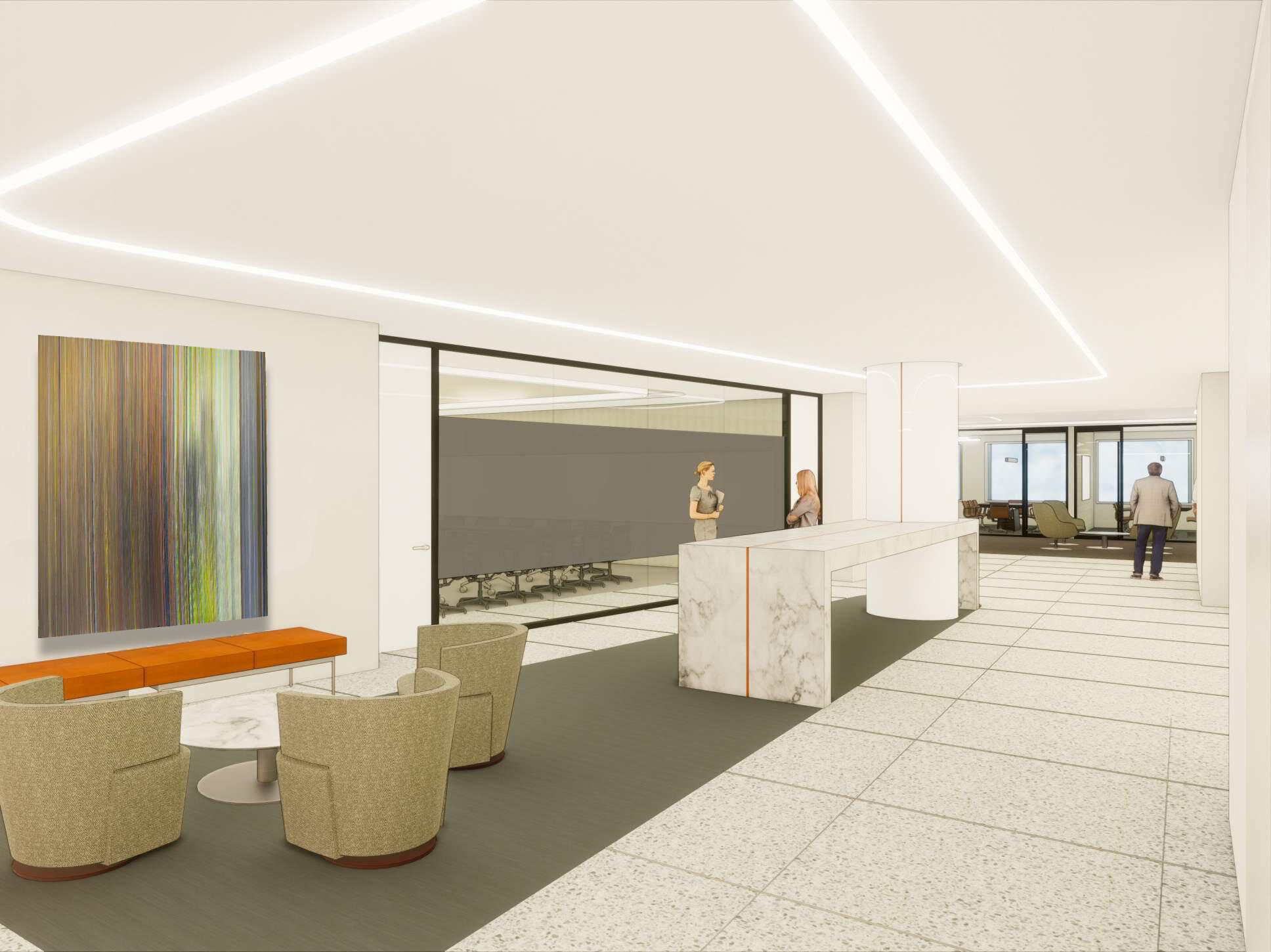Getting into the 'Swing' Spaces
Changing How We Work
Artwork in a Renovated Open Office
Working with corporate clients, we’ve seen broad changes in recent years with how employees inhabit office spaces. Companies of all sizes are morphing to accommodate new values about the nature of work, which affects the physical layout of their environments, as well as how they implement artwork.
We’ve seen large expanses of lived-in cubicles replaced with unassigned bench seating or flexible coworking spaces. In newly-renovated offices there are more walltalkers (an interactive whiteboard wall), teleconferencing spaces, and seating areas with mobile furniture to facilitate collaboration. These areas include video-conferencing equipment to connect with remote employees, and the large screens often replace artwork locations.
As work spaces change, many of our clients look for our input on how to best implement artwork in new office environments. These renovated spaces have fewer art locations than traditional office layouts, since drywall is often replaced with glass, monitors, or whiteboards. This means the artwork we suggest has to be high-impact, with a big visual payoff. Clients also value artwork that’s physically versatile, in case it needs to be relocated down the line.
Building Excitement around Renovations
Depending on the scale of construction, transitioning between existing and new work spaces can be approached in different ways. In some cases employees are temporarily relocated to separate buildings while an office is renovated, while others move to a different floor in their existing space until an entirely new building is constructed.
Most of our clients renovate their offices in phases, a floor or two at a time. During construction they temporarily relocate employees into a swing space elsewhere in the building. This functions as a holding place for people to continue working as they prepare to move into a newly constructed area. To build anticipation for the renovation, swing spaces often incorporate visual mock-ups of how the new floors will look, and include digital renderings, design finishes, and aesthetic details for people to look forward to. Swing spaces need artwork, too, to take the edge off the impermanent feeling of the temporary space. Art can also be implemented in tandem with the new space renderings in a way that mindfully enhances the architectural aesthetic.
Leaning Into the Fresh Aesthetic
For clients with an existing art collection, this presents a great opportunity to hang artwork from diverse areas of the building together. Artwork can feel refreshed and engaging when hung next to pieces that haven’t been paired together before.
On a practical note, implementing art in a temporary space is a safe way to ‘store’ the artwork without hiding it away in a traditional storage space. Construction is notorious for the many ways it can damage artwork (from drywall dust to drastic climate changes) and keeping art out of harm’s way is always a priority.
Occasionally clients will opt to purchase new artwork for swing spaces. It gives the space a sense of importance to display new additions to a collection, especially if the artwork has a progressive aesthetic that anticipates new fresh design of the renovations.
Overall we’ve seen that artwork plays a key role in keeping employees positive during swing space transitions. Whether it’s seeing a familiar favorite from the company’s collection or enjoying newly-purchased pieces, implementing artwork makes an environment feel welcoming.
. . .



